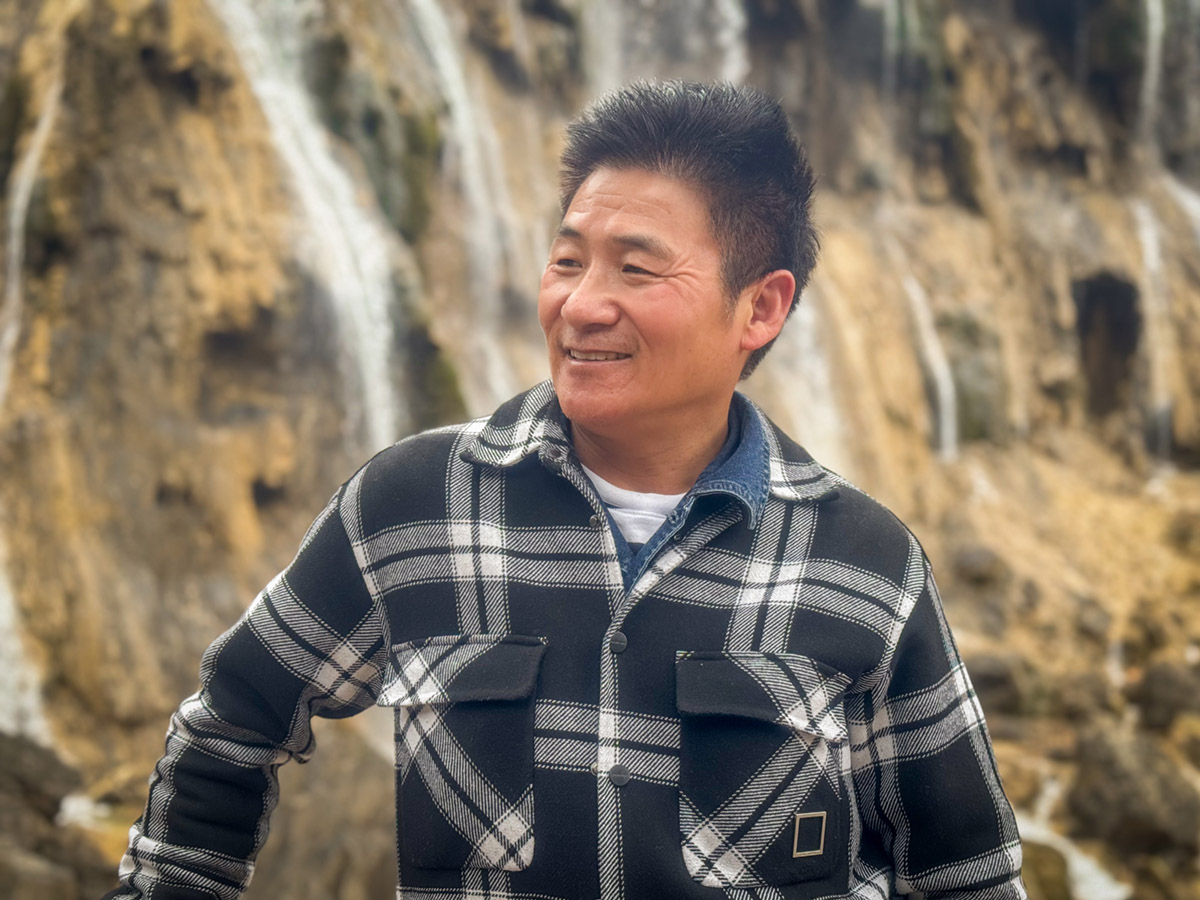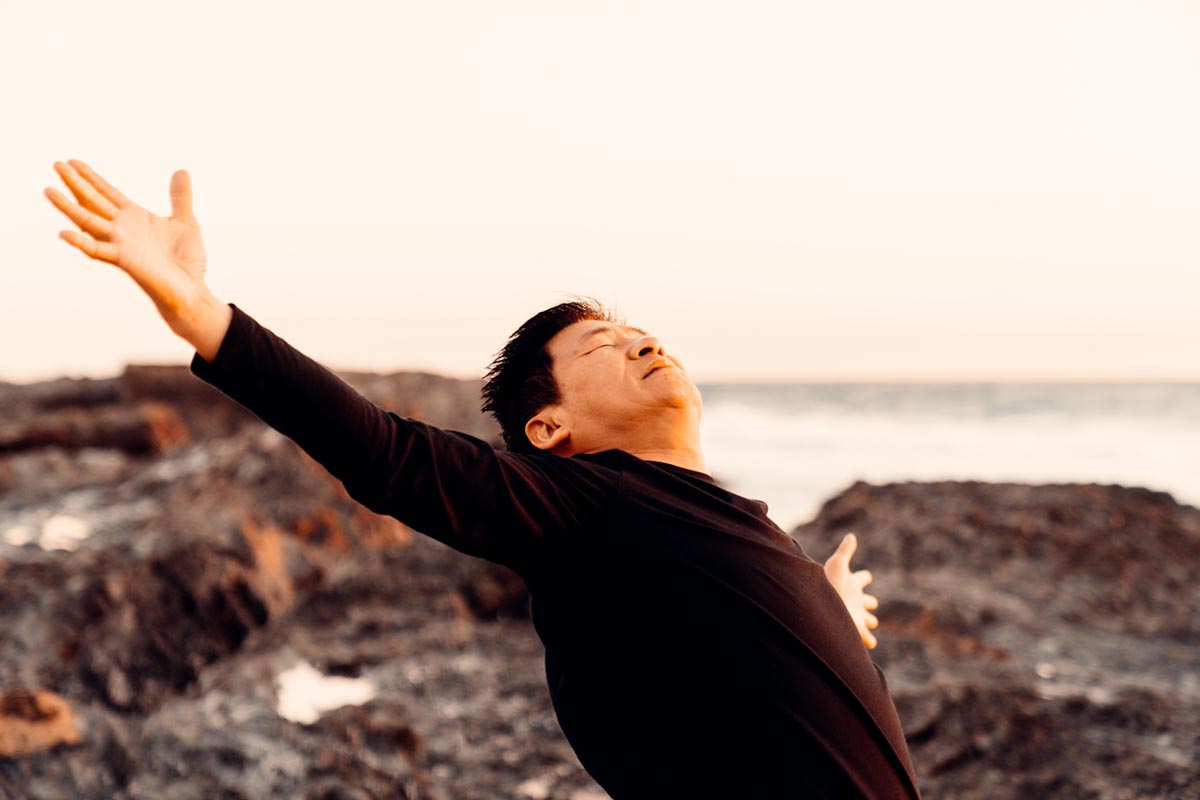When people see Calligraphy Health, they often say it looks like Qigong, or Tai Chi, and some even think it is a form of Yoga. Each of these traditions is deep and diverse – a few paragraphs cannot cover entire libraries – so what follows is a concise comparison to help you place Calligraphy Health in context.
The short answer: Calligraphy Health shares roots with Chinese internal arts such as Qigong and Tai Chi, and even has some dialogue with modern Yoga. Yet the method sits most cleanly in the Chinese category of Nei Gong – internal cultivation – where movement serves the felt transformation of the body’s inner state rather than being an end in itself. This is why Calligraphy Health can support well-being across many domains – from sleep and stress to digestion and posture – by working from the inside to the outside.
Yoga – The Path of Body and Breath
Originating in India, Yoga is a comprehensive system that encompasses ethics, philosophy, and meditation. In practice, most people encounter āsana (posture) and prāṇāyāma (breath regulation) as primary methods for cultivating stillness and integrating body and mind. The classical aim, described in Patañjali’s Yoga Sūtras, goes beyond physical flexibility – it is to stabilise attention and quiet the fluctuations of the mind (citta vṛtti nirodha).
Modern Yoga takes many forms, yet much of it still works from outside to inside – using posture, alignment, and breath to influence the nervous system, emotional balance, and inner awareness.
In essence, Yoga progresses from the outer to the inner – from the cultivation of posture and breath toward stillness, concentration, and inner awareness.
Taijiquan / Tai Chi – Flow and Balance in Motion
Taijiquan (commonly known as Tai Chi) is a traditional Chinese internal martial art that is also widely practiced today as a method for health and meditation in motion. Training consists of slow, continuous sequences coordinated with the breath and guided by the principles of yin–yang balance and movement initiated from the dantian (the body’s centre of gravity and energy). Through this integration of mind, breath, and body, Taijiquan develops relaxation, balance, coordination, and refined internal power.
Although its roots lie in martial application, most modern practitioners study Tai Chi primarily for its benefits to health, posture, and inner equilibrium rather than for combat. In contrast to many forms of Yoga, Tai Chi emphasises continuous whole-body movement, internal connection, and dynamic balance cultivated through motion rather than static postures. Compared to Qi Gong, which focuses on cultivating and circulating energy through isolated or stationary exercises, Taijiquan expresses that internal energy through coordinated, whole-body movement guided by martial structure and dynamic interaction.
Qigong – Cultivating and Regulating Qi
The term Qigong (氣功) became widely used in the 20th century, especially after the 1950s in mainland China. Before that, practices involving breath regulation, posture, and internal cultivation existed under various traditional names such as Dao Yin (導引), Tu Na (吐納), Nei Dan (內丹), and Nei Gong (內功). When the Chinese government sought to systematise and promote these diverse methods for public health, they unified them under a single, modernised term “Qigong”.
Qigong literally means “energy skill” or “cultivation through qi.” It encompasses a wide range of methods for regulating and enhancing life energy – some primarily medical or health-oriented, others martial, meditative, or spiritual in nature. Certain systems use structured movement sequences, while others rely on standing postures, breath work, or internal awareness alone.
In modern contexts, Qigong is often presented within the framework of Traditional Chinese Medicine (TCM) and is integrated into hospitals, rehabilitation, and wellness programs as a form of self-regulation and preventive care.
Nei Gong – Internal Skill and Transformation
Nei Gong (內功) can be understood as a deeper internal branch within the broader family of Qigong practices – one that focuses not only on circulating qi, but on transforming the body, energy system, and consciousness from within.
Many traditional lineages regard Nei Gong as a distinct and more advanced discipline, because it goes beyond energy movement into structural alignment, organ-level regulation, and refinement of awareness.
The term literally means “internal skill” or “internal work.” It refers to a group of Chinese internal cultivation methods that change how body, breath, qi, and mind operate together from the inside out. While movement may be part of its training, Nei Gong’s defining quality is internal transformation – refining the body’s mechanics, breath pressure, connective-tissue elasticity, and organ harmony, alongside the cultivation of mental stillness and energetic coherence.
Training to “move from the dantian” or to let it guide the whole body is a shared foundation in Taijiquan, Qigong, and Nei Gong alike.
Calligraphy Health Nei Gong – Moving Meditation
Calligraphy Health was created by Master Zhen Hua Yang, drawing on his family lineage of Chinese internal arts, skilled teachers, decades of personal cultivation, and profound realisations about the body’s internal dynamics. It represents a distinct form of Nei Gong that goes beyond working solely with the dantian. Instead of treating organ movement and blood circulation as the final outcome, it takes them as the starting point of practice.
In this method, movement serves as a bridge to access deeper layers of the body. When combined with breath regulation, focused attention, and activation of internal energy points – including specific eye movements – it enables practitioners to connect with their blood circulation and then with internal organs to consciously guide the flow of qi. Here, the motion of the organs and blood circulation lead the external movement, allowing it to emerge naturally from within rather than being driven by muscular force or external form.
This inside-out approach makes Calligraphy Health a unique and accessible form of Nei Gong – effective and safe for people of different ages and physical conditions. It is often described as a moving meditation, as the mind’s attention remains inwardly focused while the body moves in a continuous, fluid way. Over time, practitioners learn to shift leadership from the “thinking brain” to the body’s natural centre of intelligence – the abdomen, known in classical Chinese theory as the dantian, where instinct, emotion, and vitality integrate. In Calligraphy Health, this centre is understood as working in unison with the internal organs, forming the foundation for true internal awareness and regulation.
Training at this level gradually restores harmony across the body’s systems: balancing the nervous system, supporting digestion, improving circulation, and releasing long-held physical and emotional tension.
Because it works through the body’s internal networks rather than muscular control, Calligraphy Health can naturally support a wide range of conditions – from recovery after injury and hormonal regulation to deep relaxation and trauma release.




